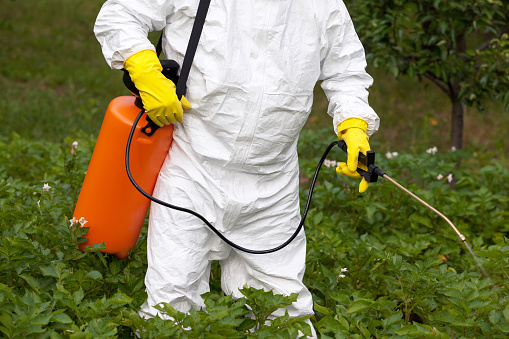
Many a handy home gardener decries the spread of weeds in their home's green pride and joy. So too the war on weeds affects local governments – though on a much larger scale. Weed management – and the chemicals used – is an essential part of your local government's responsibilities to your community.
Weeds are often introduced plants, which grow and spread rapidly, competing with native plants for water, nutrients, light and space. They're not the right food source for our native animals, and can create highly flammable fuel loads. They can also impact our communities by degrading parks, verges, public access ways and natural areas.
Local governments have several weed management responsibilities. These include encouraging responsible weed management, liaising with landowners while managing weeds on local government lands, and assisting community weed management programs, amongst others.
Chemical weed control is often used by local governments, and while effective, requires a careful risk assessment and consequence considerations, because the use of chemical herbicide may cause:
- Injury to people
- Damage to property
- Damage to the environment
The source of these risks can arise at any stage of the process, for example:
- Transport (contamination)
- Storage (contamination)
- Handling/mixing (contamination and injury)
- Application (contamination and injury)
- Disposal (contamination and injury)
Local governments are responsible for the safe use of chemicals in each process of weed management – before, during and after the chemical is used.
Who or what is at risk?
-
People (employees, the public):
In relation to people, local governments may be exposed to liabilities concerning workers' compensation or personal injury to members of the public. People may suffer illness as a result of pesticide or chemical exposure, such as skin contact or inhalation and ingestion.
-
Animals:
Native, wild or privately owned animals could suffer illness or death as a result of exposure.
-
Property (crops):
It is essential to consider the risks posed to neighbouring property prior to the use. Damage to property, such as crops, can result in financial losses.
-
Environment (pollution, contamination):
Environmental damage from chemicals includes water/soil contamination, impact on native vegetation and wildlife, and pollution. As an example, studies show that the use of chemicals may impact the land's biodiversity by killing insects.
It's important to note that there could be criminal prosecutions and administrative proceedings (such as fines and civil claims), relating to environmental damage.
Assessing the risks

An assessment should always be the first step when looking at ways to mitigate risks. It is essential to carry out a risk assessment of the chemical being used, the environment, and application.
Does the use of this product create or increase risk for people, animals, crops or the environment? Are there any reasonable measures available to eliminate or mitigate these risks?
These questions should be asked within the context of the specific circumstance and before the chemical is used, because the use of chemicals in one area may not create the same risks if used in another area (e.g. urban and rural areas).
Ask yourself the following:
- Can we eliminate the risk – is that reasonable?
- Are there safer products?
- What are the consequences of doing this (cost, effectiveness, hazards created by the new product)?
- Are you complying with the legal requirements?
- Are you using the product in accordance with the instructions?
Compliance with legislation and regulations is mandatory; the Health (Pesticides) Regulations 2011 specifies the requirements for the use of pesticides in public spaces.
Always check the products' Material Safety Data Sheets for minimum guidelines on storage, transport, handling, and application. Some other mitigation measures you should consider include:
- Transport – Check quantities and processes (e.g. no chemicals in the cabin of the vehicle), ensure correct protective equipment and documentation.
- Storage – Check the volume, whether you need a licence, and the conditions around storage (e.g. ventilation)
- Handling/mixing – Strictly follow the instructions and labels. Workers may require training, protective equipment.
- Application – Strictly follow the instructions and labels. Workers may require training, protective equipment. Do you need to notify neighbours or use warning signs in the area to inform people of the hazards?
Further to all of the above, it is essential to maintain records of all training, chemical management, and incidents.
All of these measures will help protect local governments from the liabilities involved with weed management.
The following Australian cases illustrate issues involving the use of chemicals:
Puntoriero v Water Administration Ministerial Corporation (2009) 104 LGERA 419
Potato farmers won a case against the Water Administration company. The water company added chemicals to the water to tackle an infestation of blue-green algae, and when the farmers used the water for irrigation, they lost their crops. The court found the conduct was found to be negligent because the water company did not warn the farmers about the use of the chemicals.
Perre v Apand (1999) 198 CLR 180
A farmer claimed damages on the grounds that the neighbour's conduct allowed potato wilt to spread in his land.
Tutton v Walter (1986) 3 WLR 797
The respondent's use of pesticide on their own crops killed the plaintiff's bees. This case was awarded to the plaintiff due to lack of warning and risk assessments taken out.
For more information on your risks around weed management, contact the LGIS risk and governance team on 9483 8888.
